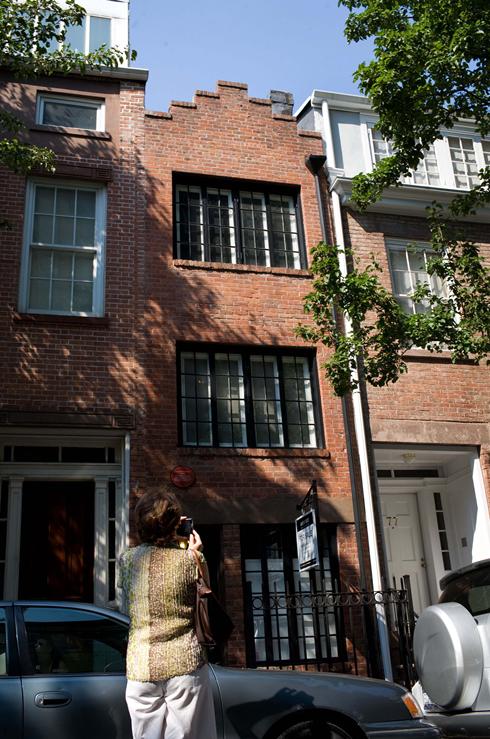Time for the ‘talk’
James Pasternak
Sun
Successful family gatherings are those in which family members know what not to say. Family restraint, after all, leads to civility. But in matters of estate and financial planning, silence and delay may not be golden.
“You want [a conversation] when the parents are healthy and still able to articulate their own wishes and desires and are still comfortable in having this type of conversation with their own adult children,” says Lee Anne Davies, head of Royal Bank of Canada’s retirement strategies.
“You could leave it too late. And then it becomes impossible to have because someone has become ill.”
And even when health holds out, increasingly complex family arrangements, sibling rivalries, second marriages, car accidents, among a host of other curve balls, can make a mess out of a retirement and financial-planning strategy that seemed so simple just months before. There are countless strategies and options that parents and their children should discuss to reduce the risk of turning retirement into a nightmare and estate planning into a fiasco. But following are eight things every family should discuss sooner rather than later.
1. WHERE TO NEXT, MOM AND DAD?
Just the hint that a parent should consider a retirement facility can sour any family gathering. But absence of a game plan can result in the depletion of an estate and cause deep acrimony among siblings.
Sons and daughters of aging parents should consider the scenario of Stephen Smith, a financial advisor with Port Hope, Ont.-based Yorkminster Insurance Brokers. Mr. Smith and his wife purchased long-term care insurance in 1997, paying a premium of about $400 per month. In declining health, Mrs. Smith had to be institutionalized in 2006 due to Alzheimer’s disease. Mr. Smith is no longer paying premiums and is now receiving a $6,000 cheque each month from their insurance carrier for the $4,000-per-month cost of his wife’s institutional care.
Nevertheless, many parents balk at long-term care insurance, so sons and daughters could suggest a plan that includes the kids paying the premiums. And why not? This is a great hedge against depleting an estate and most plans have a “return of premium” provision if a claim is never made.
2. HOME CARE INSTEAD
If the discussion about long-term institutional care doesn’t go very well, there’s always the less expensive option of home care and home-care insurance. Some long-term care plans have a built-in home-care option and dad can stay parked in his La-Z-Boy. Home-care plans provide services ranging from registered nursing care to visits from an in-home personal companion. One need not be disabled or critically ill to be eligible for benefits.
But while home-care insurance is less expensive than long-term care insurance, a home-care policy holder who is transferred into a nursing facility would not be able to carry any unused benefit.
3. END OF EARNINGS
By choice or necessity, more and more Canadians are working into their late 60s and 70s. Disability insurance replaces about 60% of lost income due to injury or illness.
Disability can occur at any age, but the best time to consider buying this insurance is when someone is at their earning peak as a salaried employee.
A weakness in disability insurance is that one can have a life-threatening illness and not be disabled. That’s when critical-care insurance comes up. The bad news with critical-care insurance is that to qualify you have to be stricken with one or more illnesses, such as cancer, kidney failure, heart attack or stroke.
The good news is that you’ll receive a tax-free lump sum.
Toronto-based insurance broker and financial advisor Yirmi Cohen delivered a $300,000 cheque to a policy holder who had a benign brain tumour.
Not only did the client receive a windfall, he recovered, went on a vacation and went back to work.
4. WHO GETS THE COTTAGE?
No family wants the last memory of the cottage to be of a brother and sister hitting each other over the head with a fishing pole. Ms. Davies says that clearing the air early is essential: “What you might find is that some children are not interested in a certain property because they live somewhere else or it doesn’t fit their lifestyle.”
Bruce Gilboord, a Toronto-based Sun Life retirement income specialist, says the most efficient way to buy out family members — and settle any estate taxes — is through the purchase of a permanent life-insurance policy. And to make sure this solution runs smoothly, sons and daughters should consider sharing the cost of the premiums.
5. FAMILY REFEREE
There are few easier, cheaper and effective financial planning options than getting all family members to execute a power of attorney for property. Estates and wills lawyers Barry Fish and Les Kotzer urge families who have not executed a power of attorney to visit www.familyfight.comand read the horror stories. In the absence of a power of attorney, the public guardian might step in. Not a good move.
The 2004 Annual Report of the Office of the Provincial Auditor of Ontario found that there were numerous examples of poor investments and the draining of estates in that province’s Office of the Public Guardian and Trustee. Fish and Associates sell power-of-attorney kits for $50.
6. LOOKING OUT FOR NO. 1
Designating a power of attorney for personal care reduces the guesswork and arguments that arise when a parent is incapacitated. It assigns someone the power to express wishes, values, religious beliefs or preferences toward medical inter vention and long-term care.
7. YOUR WILL IS MY COMMAND
“Creating a will isn’t the most enjoyable thing you do with your time,” says RBC’s Ms. Davies. However, the consequences of the absence of a will are far more serious.
An out-of-date will can be worse. First and second marriages, step children and common-law arrangements can make for some complex inheritance situations. “Family structures change and as they change you want to make sure the right people are getting the right information so your intentions are well understood,” says Ms. Davies.
8. HANGING UP THE CAR KEYS
“Other than a death in the family or being evicted from your home, there are few life events more upsetting than hanging up your car keys for the last time,” says Bob Paterson, a retired sergeant with the Ontario Provincial Police. But a low-speed collision involving a senior driver can result in medical bills, litigation and loss of income.
When a parent just won’t let go of the keys, suggest a third-party diagnostician such as DriveAble.
© Copyright (c) The Vancouver Sun





